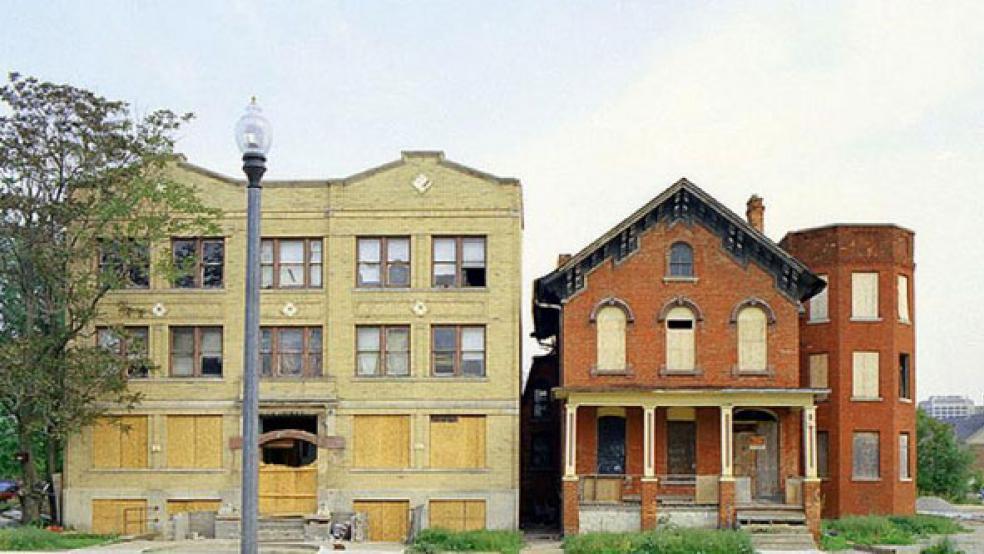A federal judge Friday approved Detroit’s plan to emerge from the largest municipal bankruptcy in U.S. history, fueling hopes that the revival of a city that for decades has been a national symbol of urban decline is at hand.
The city’s blueprint for moving forward allows it to shed $7 billion of its staggering $18 billion debt, even though many creditors — including some bond holders and the city’s 21,000 pensioners — will have to endure far smaller cuts than were originally contemplated.
The series of deals hammered out with creditors, coupled with a “grand bargain” that brought an outpouring of state and philanthropic help, will allow the Motor City to emerge from bankruptcy less than 16 months after officially tumbling into insolvency.
But some of compromises that made that rapid exit from bankruptcy possible are also raising concern about whether Detroit the city will have the financial room needed to grow its revenues and improve vital services in the crucial years to come.
Related: Detroit's 60-Year Decline into Bankruptcy Hell
“As the mayor testified, there is no question that the plan is tight,” said Charles M. Moore, senior managing director of Conway MacKenzie Inc., a management consultant firm that worked on a plan to restructure moribund city services in connection with the bankruptcy.
The city’s road map out of bankruptcy contemplates $1.7 billion in new investments over the next nine years — a vast sum for a city that for decades has been trimming investments and in recent years had capital expenditures of just $10 million, Moore said.
The money will go to new computer systems, fire trucks, ambulances and other infrastructure aimed at reviving city services that in many cases had failed to function in recent years. Currently, city police officers have no systematic way to know what previous calls a particular address had made when responding to 911 calls. And, Moore said, at one fire station, firefighters have resorted to leaving a soda cans on top of a printer to alert them when an urgent call comes in.
“The condition of operation of the city is so poor that it is not something that can be addressed overnight,” Moore said.
Related: Detroit's Creative 'Dig Out of Bankruptcy' Plan
The city’s exit from bankruptcy was swift when compared to the handful of other cities — including Vallejo and Stockton, Calif., -- that have sought court protection from creditors in recent years. The move also seemed to trigger an unusual measure of cooperation between Detroit and the rest of Michigan, which has had a strained relationship with its largest city.
Still, experts do not believe that the city’s relatively smooth trip through bankruptcy will encourage other fiscally stressed municipalities to follow its suit.
For one, it is costly: Detroit spent upwards of $150 million on lawyers and other experts needed to move the deal along. In addition, the deal leaves the city — which lost more than a quarter of its population since 2000 — with precious little financial wiggle room going forward. Meanwhile, it is still confronted with huge problems with public safety, blight and economic development, which led to its decline into bankruptcy.
“The big hurdle is whether or not they can get the services and infrastructure in place to build the city back up,” said John J. Ramirez, a restructuring lawyer, who represented a group of Detroit bond holders.
While Detroit has experienced a surge of investment in its downtown and Midtown districts, the services that will make much of the sprawling, 138-square mile city viable, remain troubled. The school system, which is operating under its own emergency manger, is confronting steep fiscal problems and low achievement rates, discouraging many families from living in the city.
Meanwhile, Detroit’s blight removal efforts are only beginning to gear up, meaning the city likely faces years of flat property values and revenue.
This article originally appeared in The Washington Post.
Read more in The Washington Post:
October Unemployment Numbers
Billionaire Thinks the Fed Is Missing Hyperinflation
Federal Sites Leaked Location of People Seeking AIDS Services





